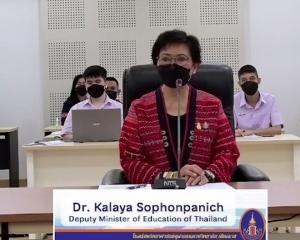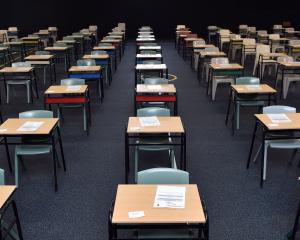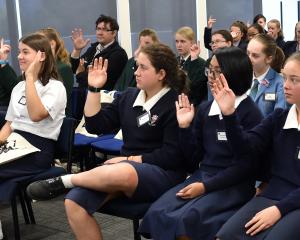Judge Becroft this week told Radio New Zealand that boards of trustees were sometimes too ready to exclude problem pupils. A problem pupil removed was a problem solved for the school involved, but was not a solution for society: the problem was simply shifted.
Ideally, schools should act as hubs for social support services so resources can be targeted at pupils most at risk, he said.
Statistics show schools now try harder to retain difficult pupils than perhaps they did in the past.
Judge Becroft seemed to agree, however, that a lack of resources stymied such efforts. "I think in the last 10 years, to be fair, there's been something of a sea change in the attitude within the whole education system, and schools are fighting really, really hard to retain people ... many schools say to me we are up to that challenge ... but at the moment we don't have enough resources. On the other hand, the Ministry of Education says 'judge, every school has got the resources ...'," he told RNZ. He added though, that schools probably needed more resources than they have at present. On the latter point, we suspect he is right. Changing anti-social and criminal behaviour is a complex, time-consuming process.
Whether schools have the staffing resources - and the highly specific skills - needed is doubtful.
The problem with the judge's very valid points, though, is reality.
How do our schools deal with the demands of difficult pupils, and educate other children, too?
The vast majority of pupils are hard-working and honest. Do they suffer from the time spent dealing with the very small minority of problem classmates?
And what about the responsibilities of parents and other caregivers?
What must be appreciated is the huge disparity of attitudes, backgrounds and abilities of pupils who arrive at our school gates every day. Research on the relationship between school and youth offending by Alison Sutherland, as published on the Ministry of Justice's website last year, points out some of "the foundation of critical risk factors" a child may bring to school: "familial risk factors, low socio-economic status, involuntary minority ethnic status, and association with criminally minded friends and associates".
These risk factors can then be "added to and entwined" with "negative school experiences that fester and build up resentment, frustration and anger in the young person".
Her conclusions did include that "it is possible that an accumulation of negative school experiences exacerbates pre-existing risk factors that place a vulnerable young person on the pathway to criminal offending". And it also revealed "the positive influence that some teachers had on the participants' school experience.
Teachers who took the time to explain things to them, who cared about their wellbeing, who spoke a common language and demonstrated a mutual respect" can and do make a difference. She also found that "what also emerged was the unique opportunity that schools provide to identify children who are most at risk of serious offending". So, we need to encourage positive, caring teachers and educators, and find ways to allow them to make a positive difference in young people's lives.
Schools also need to identify and work with social agencies helping those most at risk.
But that does not absolve the rest of us from our obligations. Judge Becroft told the New Zealand School Trustees Association's annual conference at the weekend a dependable family unit was the best way for young people to feel supported, and that few serious youth offenders came from stable, two-parent homes. Issues such as a lack of male role models, violence in the home, learning disabilities, income inequality, "community connectedness" and witnessing and learning "good values" all impacted on children, he said. It is a reminder, if any was needed, that each of us has a part to play when it comes to raising our children.











